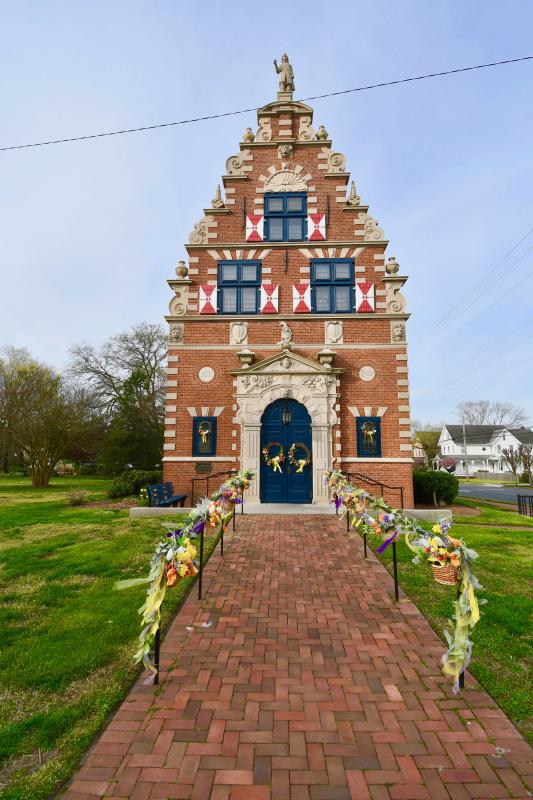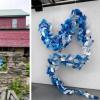What’s in a name? It’s lots in Sussex County
I've written several columns about Sussex County quirks and oddities, and they just keep coming.
Two Sussex resort cities can trace their roots – and names – back to religious groups. In 1873, the Rehoboth Beach Camp Meeting Association purchased most of the land in the town, divided it into lots and sold it, as they established a seaside retreat for summer religious camp meetings. The town took its name from Rehoboth Bay, which was named by 17th century English explorers.
The coming of the railroad in 1878 turned the town into a resort, and not just for Methodist Episcopalians who abandoned their summer retreat.
Rehoboth, which is Hebrew, shares the name with another Rehoboth mentioned in the Bible's Book of Genesis, as does Gerar, the name of the lake in the middle of the city.
The state Legislature incorporated the town in 1891, naming it Henlopen City, which was changed to Rehoboth in 1893.
Bethany Beach, founded in 1901, can also trace its roots to a religious group. The Christian Missionary Society of the Christian Church established camp meetings dating back to 1873. The first building in the small town was a tabernacle. The name was chosen from contest entries.
Other name changes
Rehoboth isn't the only town or city in the county to have a name change.
The City of Lewes has had a host of names over the past 400 years. In the 1600s, the Dutch called the town – actually a small settlement at that time – Swanendael and later Hoerenkill.
It was changed to Whorekill and Deale or New Deale by the English. Known as Lewes, Leius, Lewis, Lewestowne and Lewistown, the proper name of Lewes was given to the village by William Penn in 1682. At the same time, Penn named the county Sussex.
However, the courts in Lewes were still known as the Whorekill Courts until the close of the 17th century and into the early 1700s.
Dewey Beach – Founded as Rehoboth City, the story is that the name was changed to Dewey Beach in honor of the hero of Manila, Admiral George Dewey, in the Spanish-American War sometime in the late 1890s. The Delaware Public Archives doubts the story because there apparently are earlier references to Dewey Beach.
Milton – In 1807, the Head of Broadkiln was changed to Milton, some say in honor of famed English poet John Milton.
Dagsboro – Named in honor of Brig. Gen. John Dagsworthy of Revolutionary War fame. The town was originally named Blackfoot Town.
Millsboro – The town has a complicated early history. Two “towns,” Rock Hole Mills and Washington, merged to become Millsborough in 1809. Then somewhere along the line, it was shortened to Millsboro.
Greenwood – Originally known as St. Johnstowne, the name comes from the ancient words “grene” and “wuddu,” meaning green forest.
How they got their names
Here's how some other Sussex towns got their names.
Gumboro – It's either named after a large white gum tree on the road to the village or after the prickly seed balls of gum trees. I vote for the latter.
Bridgeville – It was an English settlement in 1730 and named Bridge Branch after the bridge over the headwaters of the Nanticoke River.
Slaughter Beach – The village on Delaware Bay is either named after William Slaughter, a postmaster in the mid-1800s, or a Native American attack of early settlers, or for the thousands of horseshoe crabs that wash up along the beach and die each year. I'll go with the third option.
Georgetown – The town was created by the Delaware General Assembly to establish a more centrally located county seat. It was named after Commissioner George Mitchell, who led the effort to relocate the county seat from Lewes, which occurred in 1791.
Seaford – General consensus is the city is named after Seaford in East Sussex, England, which is a town I have visited. They welcomed me with a reception, free lodging and meals.
Laurel – The town was a Nanticoke Indian village known as Broad Creek Town. It was later changed to Laurel for the laurel bushes growing along Broad Creek.
Fenwick Island – It's named after Thomas Fenwick, an English farmer who settled in the area at the turn of the 18th century.
Too big for one state
Delmar is the The Little Town Too Big for One State. That motto is debatable for sure, but it has a nice ring to it.
The towns of Delmar, Md., and Delmar, Del., are spilt in half by the Transpeninsular Line, the border of the two states. The name comes from DELaware and MARyland.
Being in two states creates some issues that have taken years to iron out. Delmar, Del., has the high school, while the elementary school is in Maryland.
Delaware has a mayor and council, and Maryland has a mayor and commission. The two meet independently and have joint meetings as well. The sewer treatment plant is in Maryland, but the water plant is in Delaware.
The towns have separate police departments, but share a town manager. The Maryland side has about 1,700 more people than the Delaware side (about 5,500 people overall).
Milford is split into Sussex and Kent counties by the Mispillion River. In downtown, you can walk from one side of the street to the other and be in a different county.
No more Nylon Capital
Towns also have mottos. My favorite is “If You Lived Here, You Would Be Home Now,” on Bridgeville's welcome signs.
Dewey Beach was known for more than 40 years as “A Way of Life,” which suits the resort town perfectly. However, the tagline is trademarked and Dewey officials changed the motto to “Delaware’s Favorite Playground.” I’m staying with the original motto.
Seaford's long-standing role as “The Nylon Capital of the World” is no longer. When the plant shut down, officials sought another motto and eventually came up with “The Perfect Place to Start.”
Lewes is obviously “The First Town in the First State,” founded in 1631.
Selbyville is “Proud of the Past and Future,” and the Quiet Resorts include the towns and areas around Bethany Beach, South Bethany and Fenwick Island.

































































